Mix Design Optimization and Performance Evaluation of Ultra-Thin Wearing Courses Incorporating Ceramic Grains as Aggregate
Abstract
1. Introduction
2. Materials and Methods
2.1. Materials
2.1.1. Aggregates
2.1.2. Mineral Powder
2.1.3. High-Viscosity, High-Elasticity Asphalt
2.1.4. Ceramic Grains
2.2. Experimental Methods
2.2.1. Mixture Design
2.2.2. Rutting Test
2.2.3. Bending Test
2.2.4. Immersing Marshall Test
2.2.5. Quantitative Analysis of Pores and Cracks
2.2.6. Determination of Chloride Ion Content
3. Results
3.1. Mixture Design of Ultra-Thin Wearing Course
3.1.1. Aggregate Gradations
- (1)
- Dense-Graded Mixture
- (2)
- Open-Graded Mixture
3.1.2. Determination of Asphalt Content
3.2. Evaluation of Road Performance
3.2.1. Rutting Test
3.2.2. Bending Test
- (1)
- Failure strain and bending stiffness modulus
- (2)
- Bending failure energy density
3.2.3. Immersing Marshall Test
3.2.4. Snowmelt Property of Different Ceramic Grain Contents
3.2.5. The Impact of Different Ceramic Grain Contents on Chloride Ion Release
3.2.6. Anti-Icing Performance of Different Types of Snowmelt Agents
3.2.7. The Impact of Different Snowmelt Agents on Chloride Ion Release
4. Conclusions
- This study examined the high-temperature performance, low-temperature performance, and water stability of GT-8 and NovaChip® gradations of UTWC. The effects of varying ceramic grain contents on the road performance of asphalt mixtures were analyzed. Overall, the road performance of the NovaChip® gradation was superior to that of the GT-8 gradation.
- As the ceramic grain content with adsorbed snowmelt agents increased, the release of Cl− ions within the compatible time frame was maximized, and the snowmelt property of the UTWC improved.
- Among the tested snowmelt agents, CaCl2 demonstrated the best anti-icing performance, while NaCl was the least effective. In colder regions, replacing NaCl with MgCl2 or CaCl2 is recommended to achieve better anti-icing performance.
- Considering the road performance, snowmelt property, and anti-icing performance of UTWC, a ceramic grain content of approximately 40% is recommended.
Author Contributions
Funding
Institutional Review Board Statement
Informed Consent Statement
Data Availability Statement
Conflicts of Interest
References
- Brosseaud, Y.; Bellanger, J.; Gourdon, J. Thinner asphalt layers for the maintenance of french roads. Transp. Res. Rec. 1992, 13334, 9–12. [Google Scholar]
- Keiter, T. Construction and Performance Evaluation of NovaChip in Pennsylvania: An Ultrathin Hot Mix Asphalt Resurfacing; Research Report 93-067; Pennsylvania Department of Transportation: Harrisburg, PA, USA, 1993. [Google Scholar]
- Rahman, F.; Hossain, M.; Romanoschi, S.A.; Hobson, C. Optimized design for 4.75-mm nmas superpave mix thin overlay. In Proceedings of the Congress of Transportation & Development Institute, Chicago, IL, USA, 13–16 March 2015. [Google Scholar]
- James, R.S.; Cooley, L.A., Jr.; Buchanan, S. Development of mix design criteria for 4.75-mm superpave mixes. Transp. Res. Rec. J. Transp. Res. Board 2003, 1819, 125–133. [Google Scholar] [CrossRef]
- Xie, H.B.; Cooley, L.A., Jr.; Huner, M.H. 4.75 mm NMAS Stone Matrix Asphalt (SMA) Mixtures; NCAT: Washington, DC, USA, 2003. [Google Scholar]
- Kandhal, P.S.; Lockett, L. Construction and performance of ultrathin asphalt friction course. In Flexible Pavement Rehabilitation and Maintenance; ASTM International: West Conshohocken, PA, USA, 1997. [Google Scholar]
- Seshadri, M. Novachip Paving in Mississippi; Mississippi Department of Transportation: Jackson, MS, USA, 1993. [Google Scholar]
- Cooper, S.B., Jr.; Mohammad, L.N. Novachip (trademark) surface treatment: Six year evaluation: Theriot canal bridgest. Charles bridge, route la 308, lafourche parish. Life Cycle Costing 2004, 2004, 38. [Google Scholar]
- Lin, Z. Application of modified asphalt wear layer on high grade pavements. Pet. Asph. 2006, 131, 503–511. [Google Scholar]
- Liu, Z.; Xing, M.; Chen, S.; He, R.; Cong, P. Influence of the chloride-based anti-freeze filler on the properties of asphalt mixtures. Constr. Build. Mater. 2014, 51, 133–140. [Google Scholar] [CrossRef]
- Hans-Georg, E.; Wilhelm, K. Protective Layer for the Surface of Traffic Areas and Process for Applying a Protective Layer. Patent WO1994023130 A1, 13 October 1994. [Google Scholar]
- Dubois, R. Deicing Compositions Contained in Road Surface Material. U.S. Patent 4,012,537, 15 March 1977. [Google Scholar]
- Peter, J.H. Bituminous Material Used as Ice-Preventing Additive for Road Surfaces. Patent DE4432869A, 14 June 1995. [Google Scholar]
- Suren, J.; Kamereit, W. Method and Composition for Preventing Traffic Surfaces Becoming Slippery in Winter. U.S. Patent 6,982,044, 3 January 2006. [Google Scholar]
- Siegmund, W. Antifreeze Protection of Roads. U.S. Patent 4,296,207, 20 October 1981. [Google Scholar]
- Wilhelm, K.; Alois, B. Method of Producing Synthetic Gravel and/or Chippings Containing Salt. Patent EP0659202A1, 28 June 1995. [Google Scholar]
- Kazuo, S.; Kazutomo, K. Production of Antifreezing Agent for Asphalt Pavement. Patent JP10-219234A, 18 August 1998. [Google Scholar]
- Siegmund, W. Railing Trials Which Will Contain a Free-Frosting Medium for Roads and Bridges. Patent DE 2512691(Al), 20 March 1975. [Google Scholar]
- Heinz, V. Road Covering Made of an Asphalt Mixture Comprising an Ice-Inhibiting Component. Patent EP0332803A2, 13 April 1996. [Google Scholar]
- Konno, R.; Yahazaki, H.; Goto, S. Antifreezing Agent for Road Surface: Japan. Patent JP6-136356A, 17 May 1994. [Google Scholar]
- Augeri, F. Placement of an experimental bituminous concrete mixture utilizing an asphalt additive verglimit. Pavement Compon. 1987, 12, 22. [Google Scholar]
- Lee, R.C.; Sackos, J.T.; Nydahl, J.E.; Pell, K.M. Bridge heating using ground-source heat pipes. Transp. Res. Rec. 1984, 962, 51–56. [Google Scholar]
- Araki, Y.; Takeda, I.; Suzuki, S. Follow-up survey on powder/chloride freeze control pavement: Survey cases of Europe and Japan. Pavement 1997, 32, 8–14. [Google Scholar]
- Wright, M. A Study of the Effects of Adding Ice Retardant Additives to Pavement Surface Course Materials. Ph.D. Thesis, University of Nottingham, Nottingham, UK, 2013. [Google Scholar]
- JTG E42; Test Methods of Aggregates for Highway Engineering. Ministry of Communications of the PRC: Beijing, China, 2005.
- JTG F40; Technical Specification for Construction of Highway Asphalt Pavements. Ministry of Communications of the PRC: Beijing, China, 2004.
- Yu, J.; Chen, Y.; Wei, X.; Dong, N.; Yu, H. Performance Evaluation of Ultra-Thin Wearing Course with Different Polymer Modified Asphalt Binders. Polymers 2022, 14, 3235. [Google Scholar] [CrossRef] [PubMed]
- Mogawer, W.S.; Austerman, A.J.; Underwood, S. Effect of Binder Modification on the Performance of an Ultra-Thin Overlay Pavement Preservation Strategy. Transp. Res. Rec. 2016, 2550, 1–7. [Google Scholar] [CrossRef]
- JTG E20; Standard Test Methods of Bitumen and Bituminous Mixtures for Highway Engineering. Ministry of Communications of the PRC: Beijing, China, 2011.
- Yu, J.; Chen, F.; Deng, W.; Ma, Y.; Yu, H. Design and performance of high-toughness ultra-thin friction course in south China. Constr. Build. Mater. 2020, 246, 118508. [Google Scholar] [CrossRef]
- Liu, X. Research of Skid Resistance of Asphalt Based on the Principle of Differential Abrasion. Master’s Thesis, Harbin Institute of Technology, Harbin, China, 2014. [Google Scholar]
- Zhou, J.; Chen, X.; Xu, G.; Fu, Q. Evaluation of low temperature performance for SBS/CR compound modified asphalt binders based on fractional viscoelastic model. Constr. Build. Mater. 2019, 214, 326–336. [Google Scholar] [CrossRef]
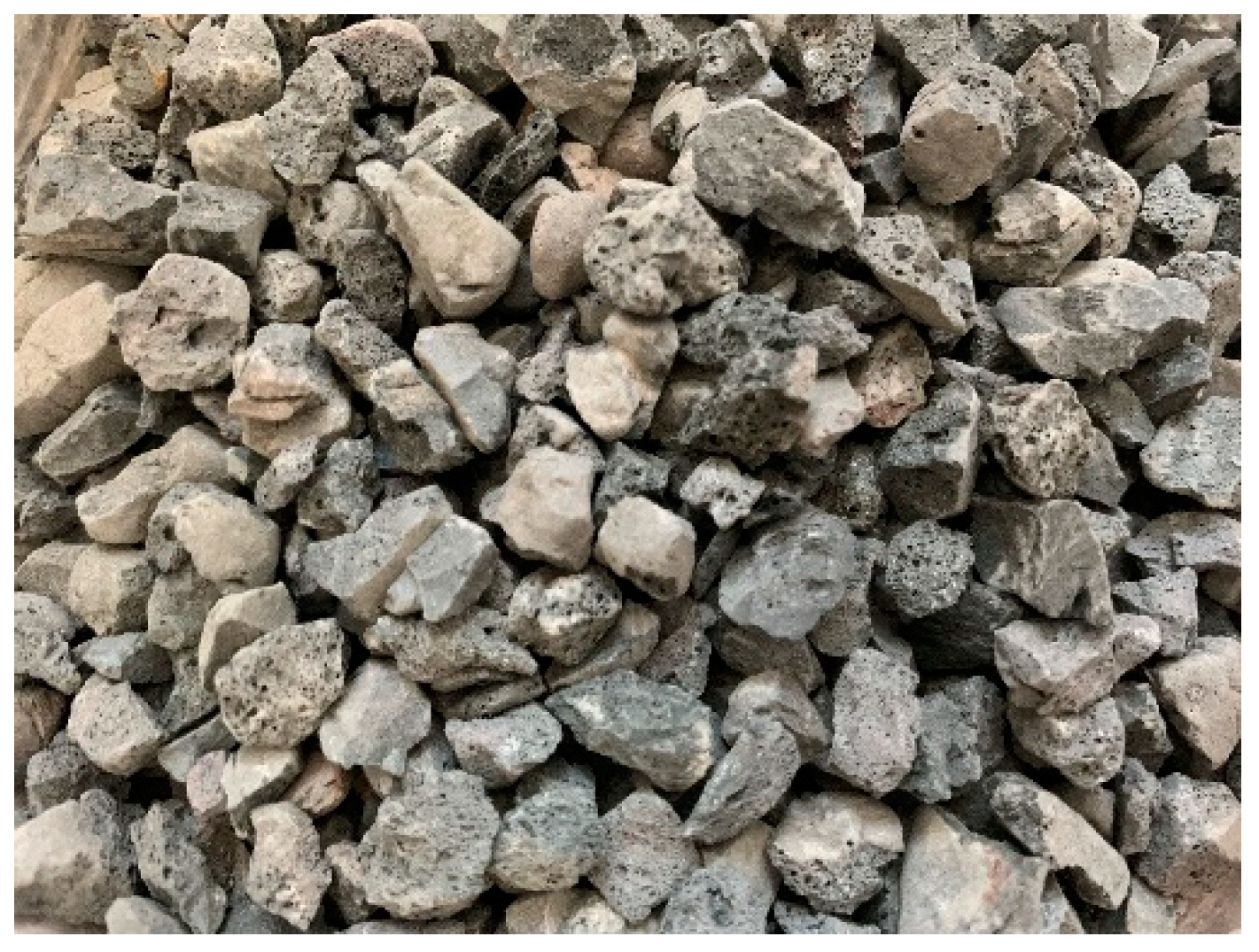


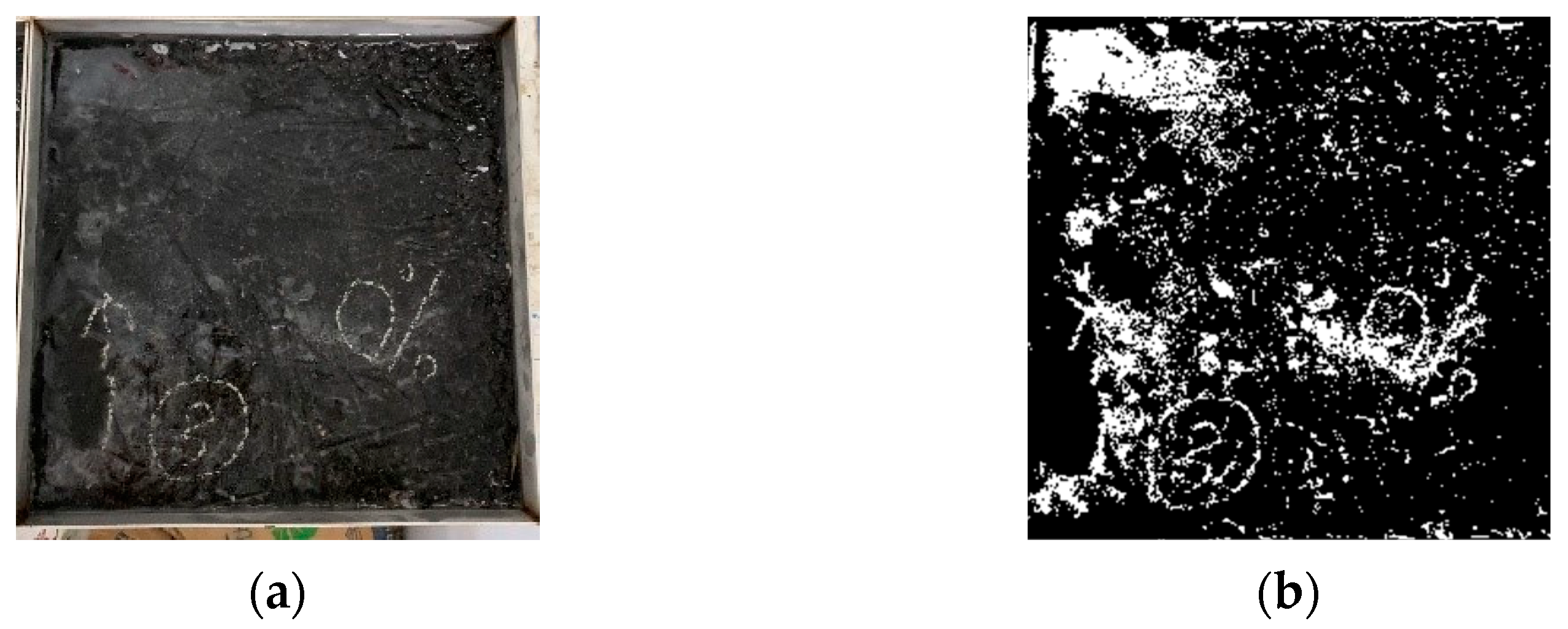
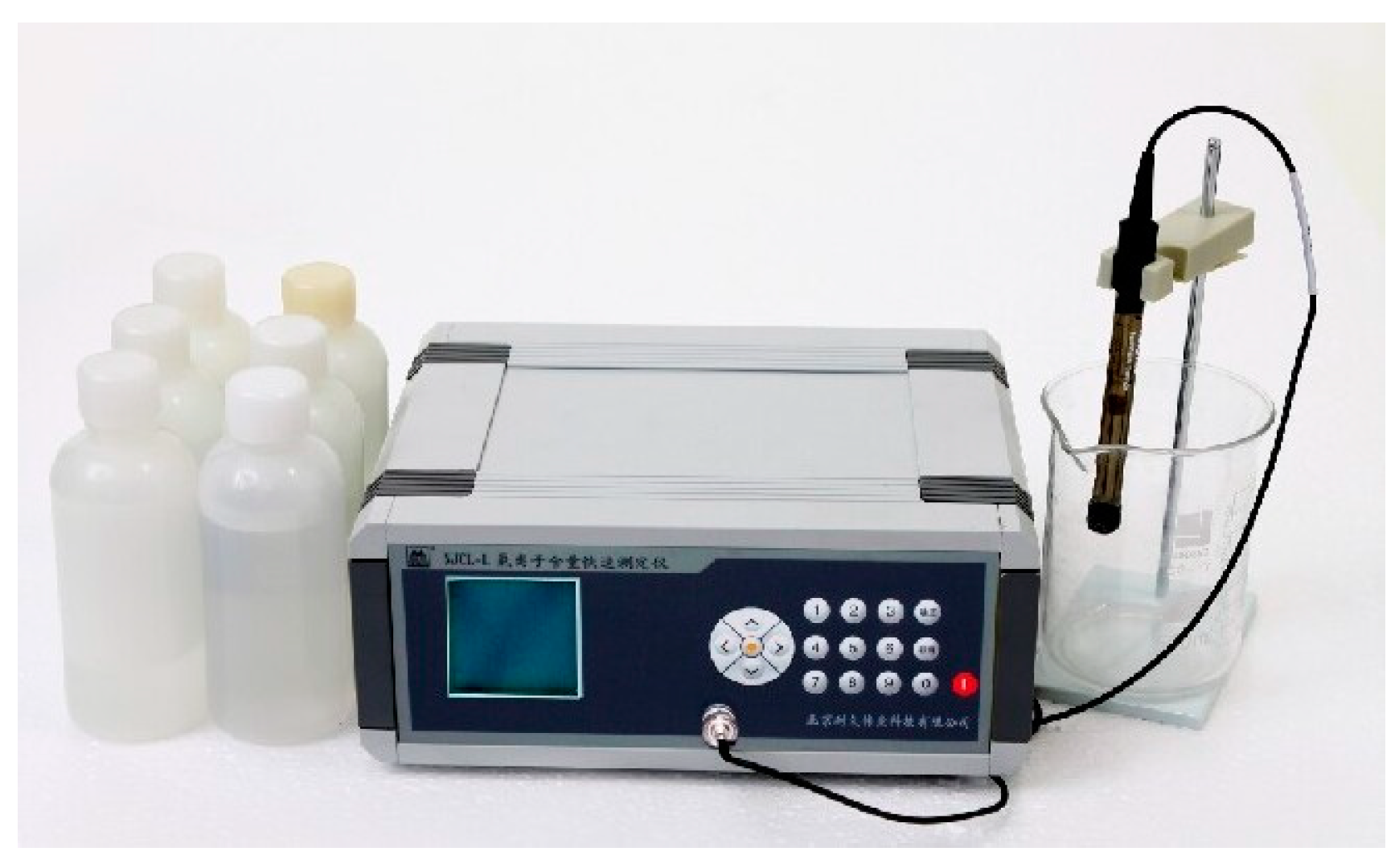
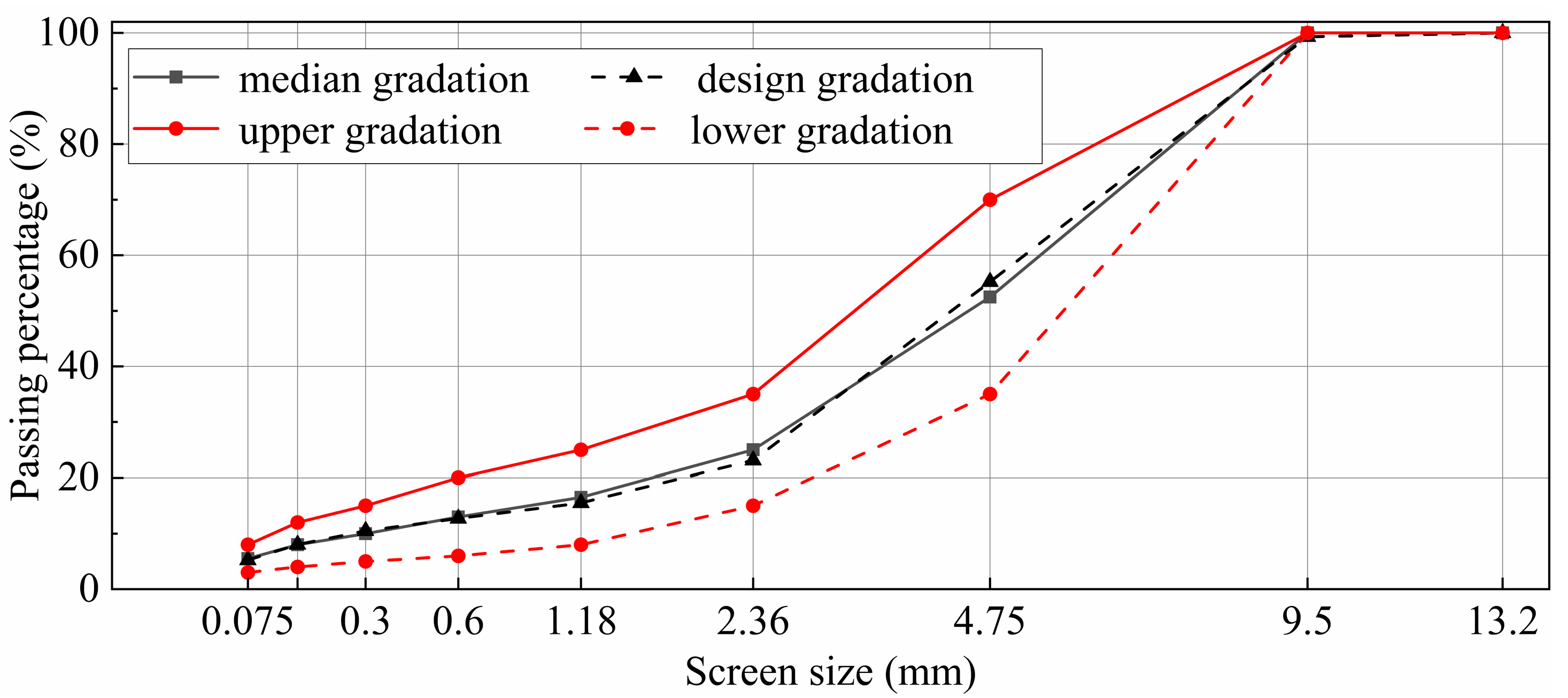

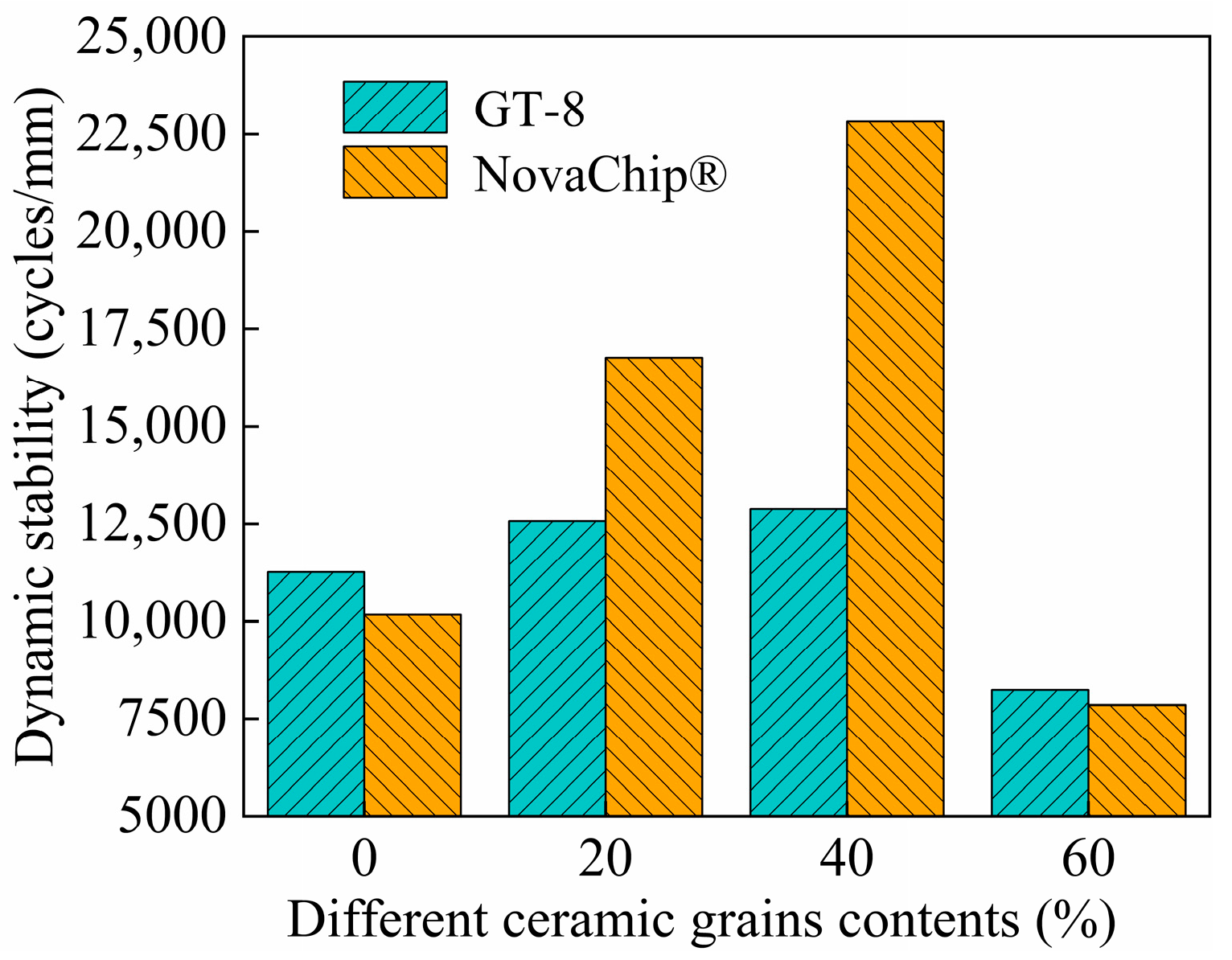
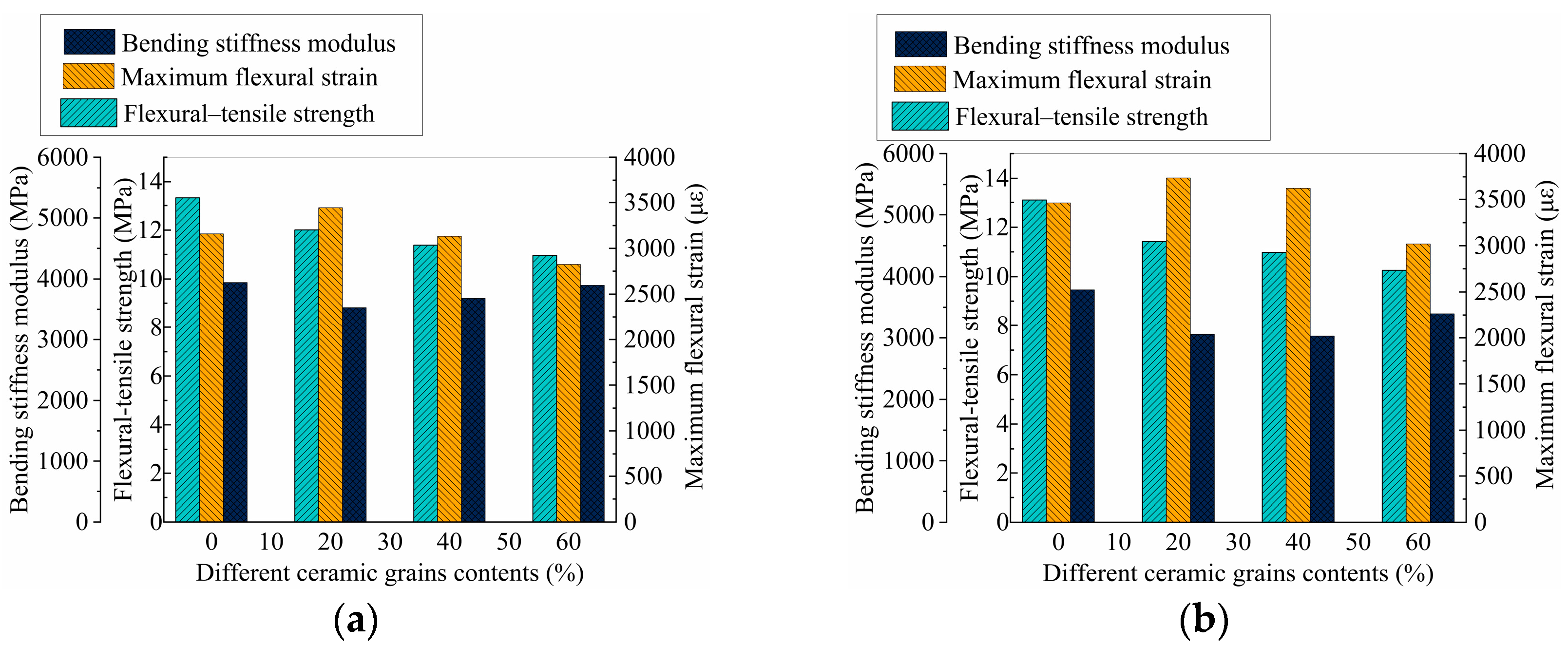



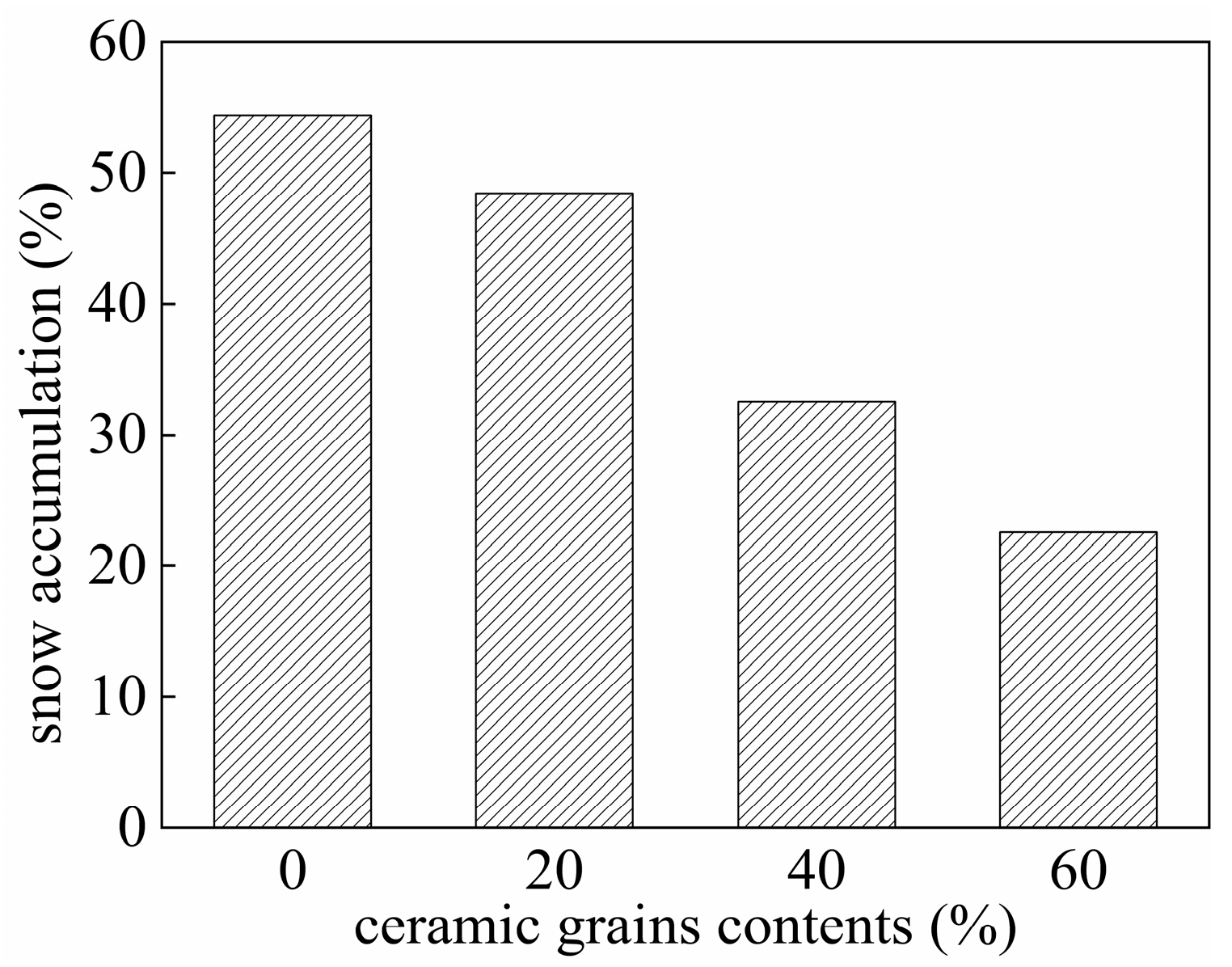
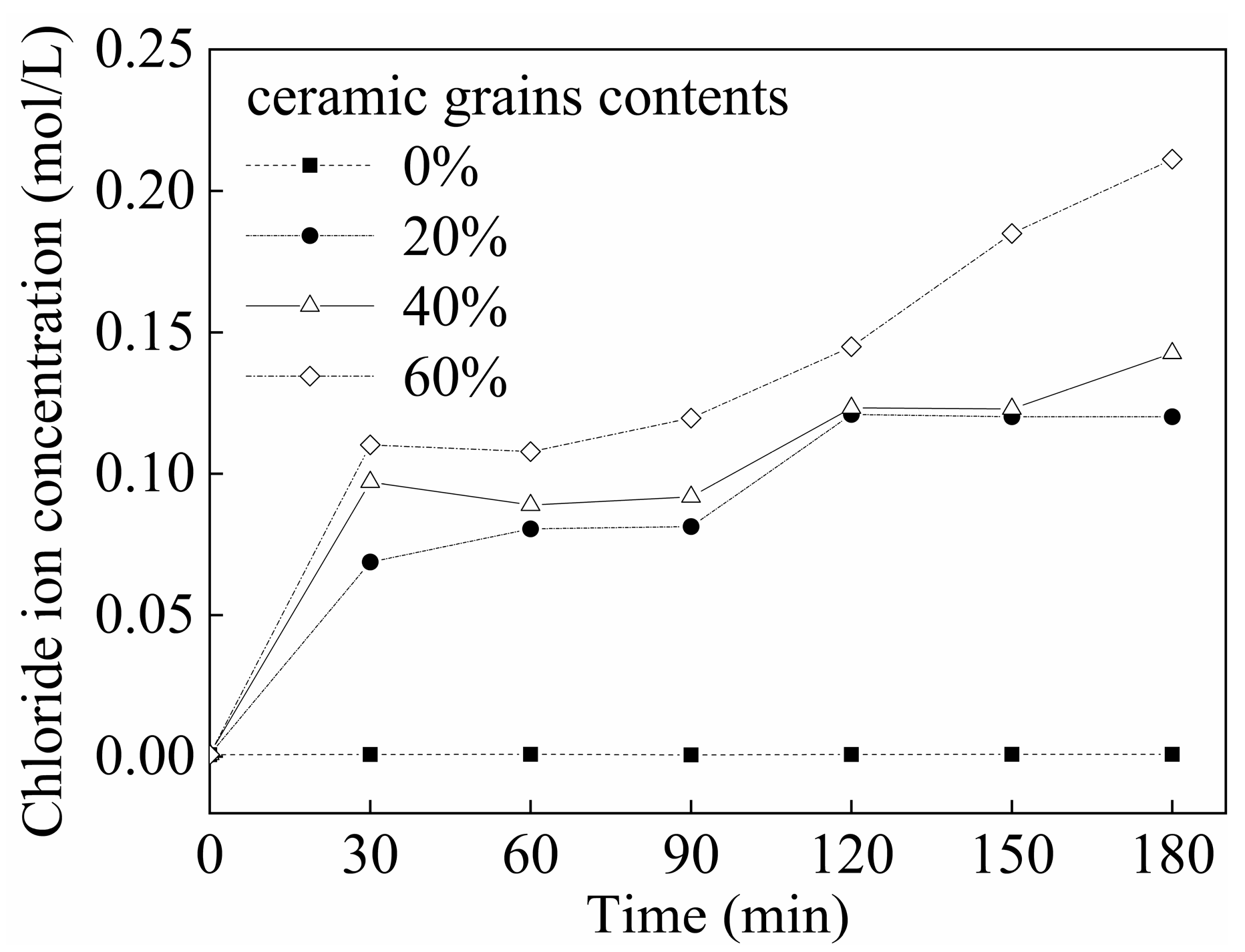
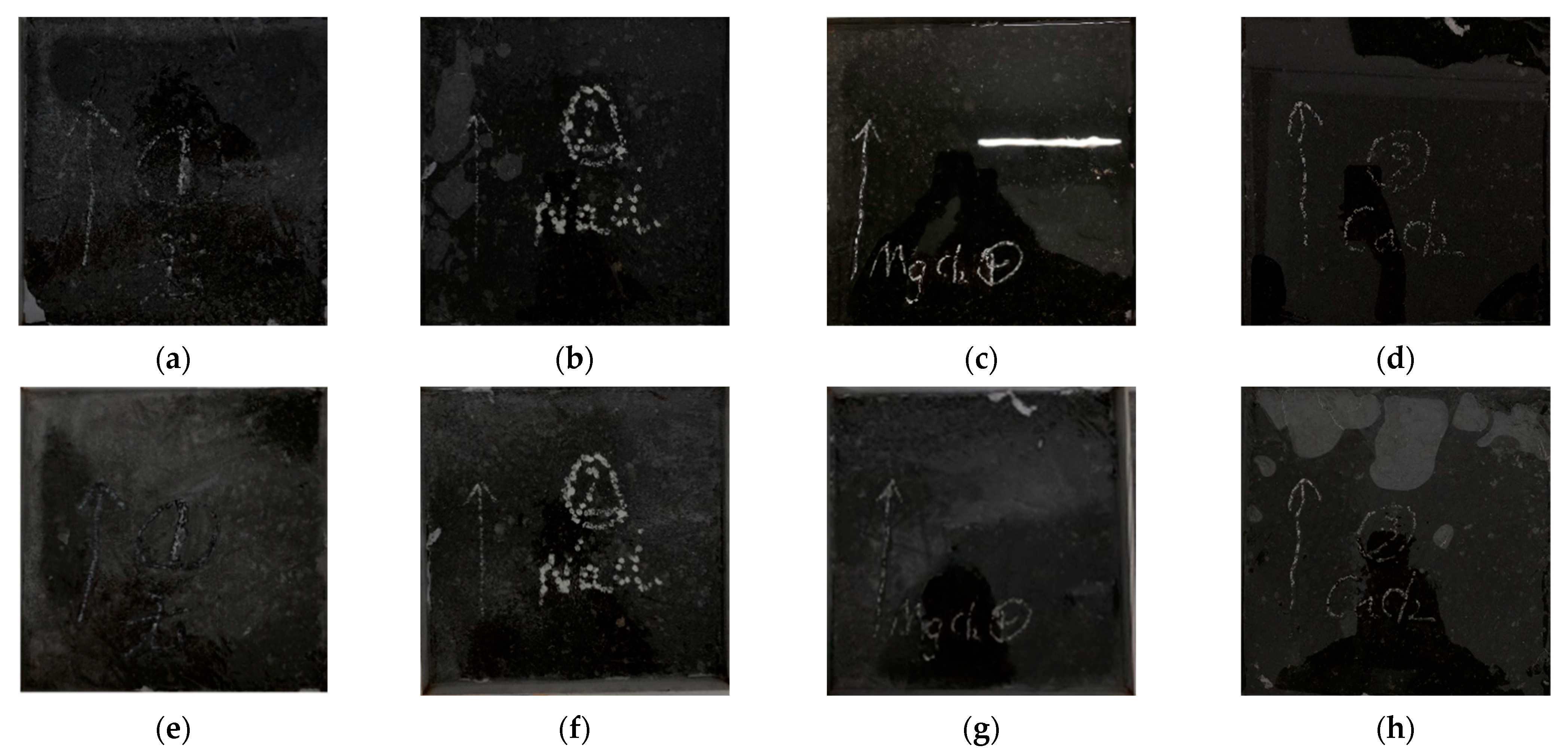

| Coarse Aggregate | Aperture Size (mm) | Technical Requirements | Test Methods | |
|---|---|---|---|---|
| 2.36 | 4.75 | |||
| Apparent relative density | 2.844 | 2.763 | ≥2.6 | T 0304 |
| Water absorption (%) | 1.9 | 1.2 | ≤2.0 | T 0307 |
| Crushing value (%) | 12.9 | ≤26 | T 0316 | |
| Abrasion value (%) | 12.7 | ≤28 | T 0317 | |
| Fine Aggregate | Aperture Size (mm) | Technical Requirements | Test Methods | ||||
|---|---|---|---|---|---|---|---|
| 0.075 | 0.15 | 0.3 | 0.6 | 1.18 | |||
| Apparent relative density | 2.762 | 2.784 | 2.745 | 2.795 | 2.780 | ≥2.5 | T 0304 |
| Angularity (s) | 36 | ≥30 | T 0345 | ||||
| Sand equivalent (%) | 81 | ≥60 | T 0334 | ||||
| Technical Specifications of Mineral Powder | Test Results | Technical Requirements | Test Methods | |
|---|---|---|---|---|
| Apparent relative density | 2.798 | ≥2.5 | T 0352 | |
| Particle size range | <0.6 mm | 100 | 100 | T 0351 |
| <0.15 mm | 92.7 | 90~100 | ||
| <0.075 mm | 80.3 | 75~100 | ||
| Hydrophilicity coefficient | 0.7 | <1 | T 0353 | |
| plasticity index | 1.9 | <4 | T 0354 | |
| Appearance | No agglomeration or lump formation | No agglomeration or lump formation | - | |
| Test Items | Unit | Technical Requirements | Test Results | Test Methods |
|---|---|---|---|---|
| Penetration degree (25 °C, 5 s, 100 g) | 0.1 mm | 30~60 | 37.0 | T 0604 |
| Softening point | °C | ≥90 | 95.8 | T 0606 |
| Ductility (5 °C) | cm | ≥20 | 22.0 | T 0605 |
| Flash point | °C | ≥230 | 337 | T 0611 |
| Elastic recovery (25 °C) | % | ≥95 | 103 | T 0662 |
| Dynamic viscosity (60 °C) | Pa·s | >400,000 | 486,870 | T 0620 |
| Grain Size (mm) | Apparent Density (g/cm3) | Water Absorption (%) | Crushing Value (%) |
|---|---|---|---|
| 5–10 | 1.189 | 9.3 | 67.1 |
| Ceramic grainscontent(%) | 0 | 20 | 40 | 60 |
| Optimal oil–stone ratio(%) | 6.7 | 7.1 | 7.3 | 7.8 |
| Ceramic grainscontent (%) | 0 | 20 | 40 | 60 |
| Optimal oil–stone ratio(%) | 4.9 | 5.4 | 5.5 | 6.0 |
Disclaimer/Publisher’s Note: The statements, opinions and data contained in all publications are solely those of the individual author(s) and contributor(s) and not of MDPI and/or the editor(s). MDPI and/or the editor(s) disclaim responsibility for any injury to people or property resulting from any ideas, methods, instructions or products referred to in the content. |
© 2025 by the authors. Licensee MDPI, Basel, Switzerland. This article is an open access article distributed under the terms and conditions of the Creative Commons Attribution (CC BY) license (https://creativecommons.org/licenses/by/4.0/).
Share and Cite
Li, H.; Cheng, M.; Xie, X.; Zhang, T. Mix Design Optimization and Performance Evaluation of Ultra-Thin Wearing Courses Incorporating Ceramic Grains as Aggregate. Coatings 2025, 15, 249. https://doi.org/10.3390/coatings15020249
Li H, Cheng M, Xie X, Zhang T. Mix Design Optimization and Performance Evaluation of Ultra-Thin Wearing Courses Incorporating Ceramic Grains as Aggregate. Coatings. 2025; 15(2):249. https://doi.org/10.3390/coatings15020249
Chicago/Turabian StyleLi, Hanjun, Ming Cheng, Xiaoguang Xie, and Tianxu Zhang. 2025. "Mix Design Optimization and Performance Evaluation of Ultra-Thin Wearing Courses Incorporating Ceramic Grains as Aggregate" Coatings 15, no. 2: 249. https://doi.org/10.3390/coatings15020249
APA StyleLi, H., Cheng, M., Xie, X., & Zhang, T. (2025). Mix Design Optimization and Performance Evaluation of Ultra-Thin Wearing Courses Incorporating Ceramic Grains as Aggregate. Coatings, 15(2), 249. https://doi.org/10.3390/coatings15020249




